The Great Escape: Welshman inspired Steve McQueen role
- Published
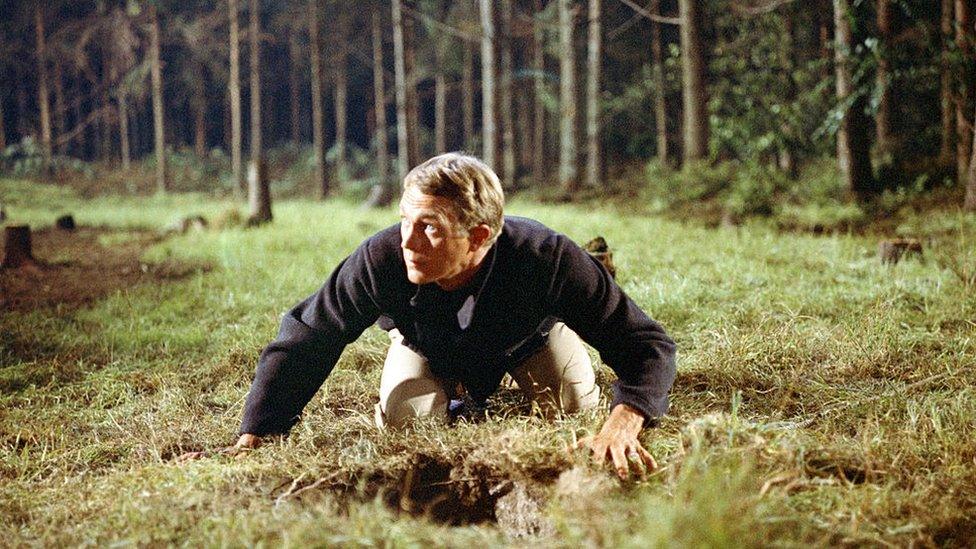
Steve McQueen's Captain Virgil Hilts was key in the onscreen version of the 1944 Nazi prison camp breakout
It is the part that cemented Steve McQueen in the pantheon of Hollywood cool.
But how many know the American icon's role as a daredevil POW in the 1963 World War Two film The Great Escape is supposedly based on a Welshman?
Ken Rees, from Anglesey, was the bomber pilot who fought back against his Nazi captors to break free of an infamous prison camp in occupied Poland.
That heroic effort celebrates its 80th anniversary this weekend.
Having joined the RAF in 1939 at a tender 18, Flt Lt Rees was shot down over Norway on a secret mine-laying mission three years later.
The Wrexham-born airman then found himself in the Luftwaffe-run Stalag Luft III where, refusing to be beaten by the brutal treatment and harsh conditions, he made it his sole duty to escape.
The result was a 350ft (106m) tunnel, dug secretly and in painstaking increments by Rees and others under cover of darkness, or when the guards' backs were turned.
Dubbed "Harry", it was the longest of several subterranean routes to freedom carved out between the hut Rees shared with his fellow inmates and the camp's fortified perimeter.
Famously recreated in the classic film, it featured one character, played by Scottish actor Gordon Jackson, pondering how they get rid of the mounds of earth they had excavated.
Eventually they came up with an ingenious solution.
The answer was to specially adapt the inside of their trouser legs with cloth bags to carry the dirt out into the yard where it could be dumped without the Germans noticing.
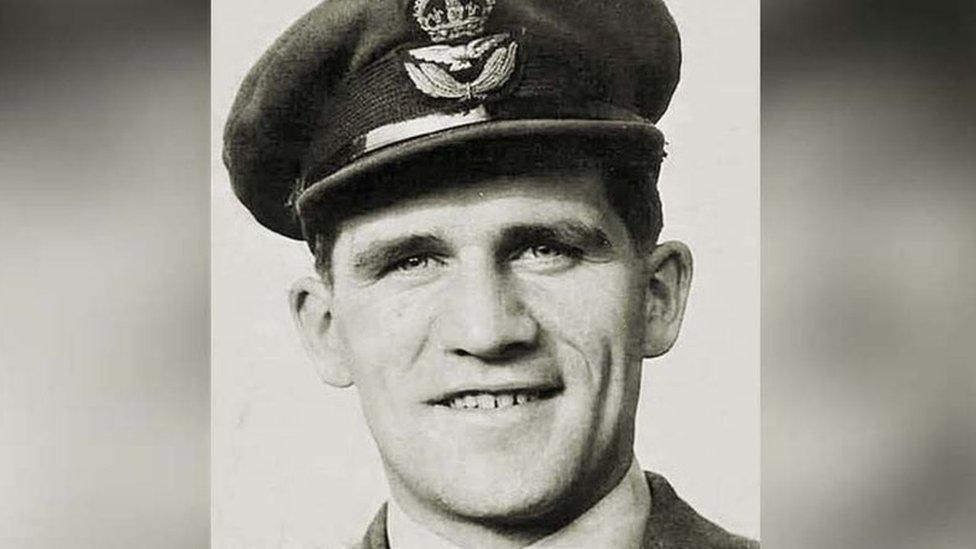
Flt Lt Ken Rees was imprisoned in Stalag Luft III and helped dig a tunnel that prisoners fled through
After a long period of preparation the crucial breakout finally took place on the moonless night of 24 March 1944, but when the prisoners emerged from underground they found themselves just short of the cover provided by nearby treeline.
One of the escapees inadvertently making a noise then drew the attention of the sentry posted along the camp's watchtowers and shots began to ring out, starting a mad scramble for safety.
Unfortunately for Rees, however, he had still been in the tunnel at this point and when he did poke his head out he found himself looking up at the barrel of a gun.
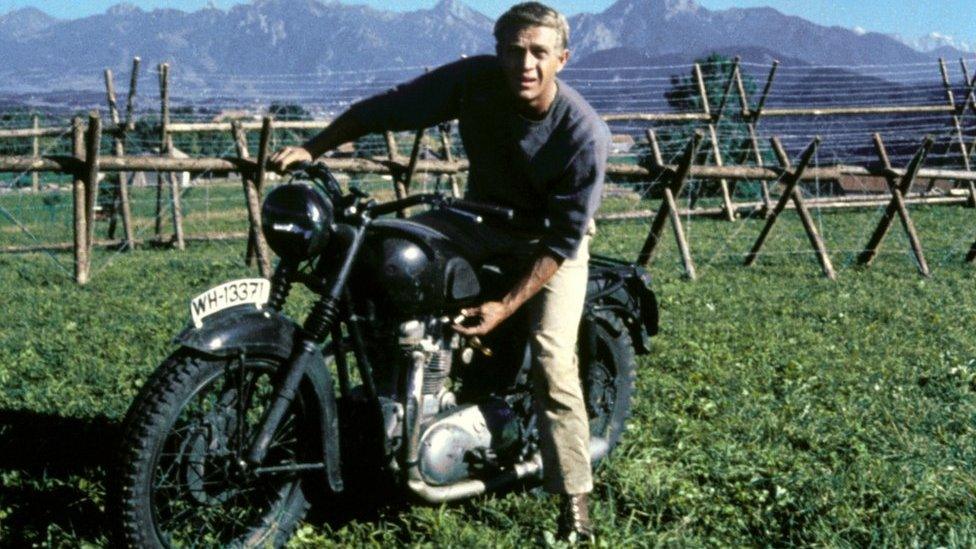
Steve McQueen on the Triumph TR6 Trophy he rode in The Great Escape's classic chase scene
Miraculously though, he was not shot: the guard who had taken aim was distracted by the shouts of a senior officer in the distance.
Instead he was stripped of his clothes and placed in solitary confinement - known as "the cooler" - back at the camp.
It was while he was incarcerated there that he slowly discovered the fate of his 76 comrades who had managed to get away. Heartbreakingly, 50 were recaptured and shot by Hitler's Gestapo, while another 23 were sent back to other stalags.
Only three made it across Europe to safety.
Towards the end of director Jon Sturges's film - and in one of cinema's most legendary chase sequences - McQueen's character, Captain Virgil Hilts, steals a motorcycle and tries to jump over a series of fences lining Germany's border with Switzerland.
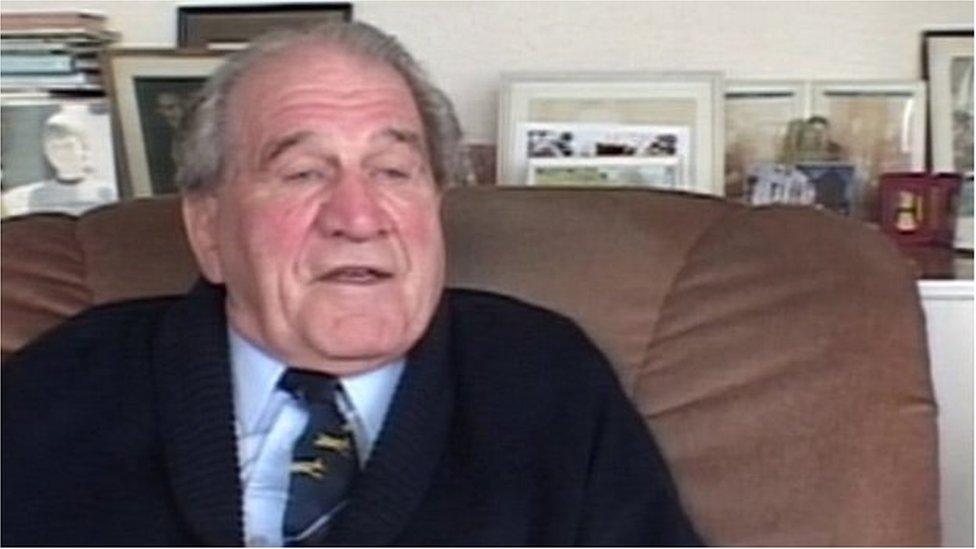
"The only things we've got in common is that we both annoyed the Germans and ended up doing stretches in solitary," said Ken Rees, pictured in 2004
Pursued on all sides by Nazi soldiers, he successfully clears one set of barriers before being shot at and falling off his bike to become entangled in barbed wire.
Like Rees, Hilts is then sent to the cooler where he immediately begins planning his next escape.
But as his real-life Welsh inspiration modestly admitted before his death in 2014, aged 93, the comparison began and ended there.
"The only things we've got in common is that we both annoyed the Germans and ended up doing stretches in solitary," said Rees in an earlier interview.
"I didn't get out (of the prison camp) and if I did I wouldn't have been able to ride a motorbike anyway."
He further maintained his wartime experiences had mostly revolved around being constantly hungry and "bored to tears" - along with "pulling faces" at his captors and randomly letting down the tyres on their patrol vehicles.
Rees would remain under Nazi watch until May 1945 when the British Army arrived to liberate him.
Journeying home to his wife Mary, whom he married just two weeks before being captured, the former draper returned to the relative peace and quiet of his old civilian life.
But his heroism in the face of adversity was never forgotten and, thanks to McQueen's timeless portrayal on the silver screen, it never will be.

JUNE: VOICE OF A SILENT TWIN: The tragic story of June, her sister and their life in Broadmoor
DEATH OF A CODEBREAKER: The man found naked & dead inside a bag

Related topics
- Published22 October 2023
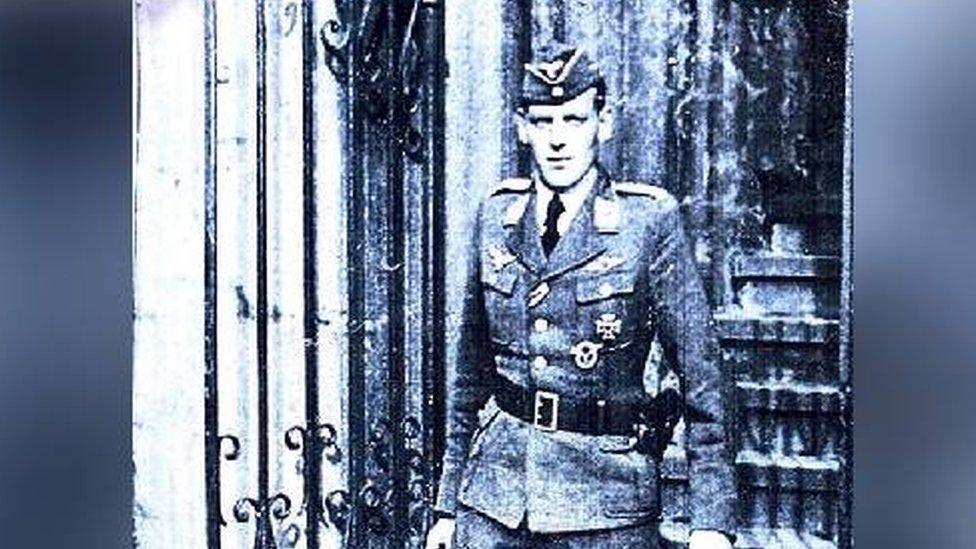
- Published18 February 2024
